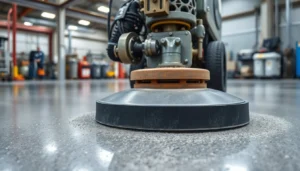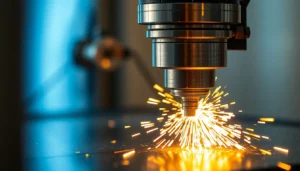Understanding the Benefits of Compactors Rental for Construction Projects
When undertaking construction, landscaping, or infrastructure projects, achieving a solid and stable foundation is paramount. Proper soil compaction not only ensures structural stability but also prolongs the lifespan of the project, reduces future maintenance costs, and enhances safety. While purchasing compactors might seem like a straightforward solution, many professionals and DIY enthusiasts are increasingly turning to compactors rental as a cost-effective and flexible alternative. Renting compactors provides access to a variety of machinery suited for specific site needs, minimizes equipment storage costs, and allows for optimal project management.
This detailed guide explores the multifaceted benefits of renting compactors, the different types of compactors available, and how rental strategies can significantly improve project efficiency, cost savings, and environmental impact. Whether you’re a contractor, landscaper, or homeowner tackling a large-scale project, understanding the advantages of equipment rental ensures smarter decision-making and successful project outcomes.
Why Renting Compactors Saves Costs and Time
One of the most compelling reasons to opt for compactors rental over purchasing equipment is its impact on project costs and scheduling. For most construction projects, the upfront investment in machinery can be prohibitively expensive, especially considering that many compactors are specialized and used intermittently. Renting provides immediate access to high-quality equipment without the substantial capital expenditure, allowing budget optimization.
Moreover, rental companies typically maintain and service their machinery, ensuring that the equipment is in peak condition—reducing downtime caused by equipment failures. This maintenance support minimizes delays, which is crucial for adhering to project deadlines. With flexible rental periods, project managers can scale equipment usage to align precisely with project phases, avoiding idle time and unnecessary expenses.
According to market research, rental equipment users typically save up to 40-60% compared to full ownership costs—covering storage, maintenance, insurance, and depreciation. For example, instead of investing thousands in a brand-new plate compactor that might only be needed for a few days, renting for a week or month makes economic sense and allows reallocating funds to other project components.
Implementing a rental strategy also accelerates project timelines. Quick access to equipment streamlines site preparation, soil compaction, and surface finishing. As you avoid delays due to equipment procurement or breakdowns, overall productivity increases, enabling projects to stay on schedule or even finish early, leading to further cost savings.
Types of Compactors Available and Their Specific Uses
The variety of compactors on the market caters to diverse site conditions and project requirements. Understanding which type aligns with your needs is vital for optimal results. Here are some of the most common types of compactors available for rent:
Vibrating Plate Compactors
Also known as wacker plates, these are lightweight, highly maneuverable machines ideal for smaller jobs, such as patio bases, pathway construction, and trench work. They provide excellent vibration to achieve thorough soil or gravel compaction on confined or confined spaces. Rental options typically include petrol, diesel, and electric models, offering flexibility based on site power sources and environmental considerations.
Ride-On Rollers
Designed for larger, more extensive projects like road construction, parking lots, and large-scale landscaping, ride-on rollers cover substantial ground quickly. They come with single or double drums and varying weight capacities, ensuring effective compaction of soil, asphalt, or aggregate materials. These machines significantly reduce labor time compared to manual compacting methods.
Tamper-Compactors (Rammers)
These are ideal for trenching and confined space work. Rammers provide vertical impact force, perfect for compacting backfill in narrow trenches or around utilities. Their size and power make them suitable for dense soils and cohesive materials.
Dynamic Compaction Equipment
For specialized applications requiring deep compaction, such as landfill sites or deep foundations, dynamic equipment may be rented. These are typically used in conjunction with other machinery and require specific expertise.
Choosing the right compactor depends largely on surface type, area size, project scope, and environmental conditions. Consulting with rental providers can help identify the most appropriate equipment to maximize efficiency and results.
Environmental Considerations When Choosing Compactors
Construction equipment can impact the environment through emissions, noise, and energy consumption. When selecting compactors for rental, environmentally conscious choices are increasingly important.
Opt for electric or battery-powered compactors when working in noise-sensitive or eco-friendly zones. These models produce zero emissions, reduce noise pollution, and often require less maintenance over time. Diesel-powered units are more powerful and suitable for heavy-duty applications but tend to emit higher levels of pollutants.
Modern rental providers are now offering low-emission engines and compliance with latest environmental standards, such as EURO 6 in Europe or equivalent regulations. Additionally, selecting well-maintained, fuel-efficient machines reduces carbon footprints and operational costs.
Proper site planning to minimize unnecessary equipment use and implementing best practices for fuel management further mitigate environmental impacts. Rental strategies that include equipment with eco-friendly features contribute to sustainable construction practices, aligning with green building certifications and corporate social responsibility goals.
How to Choose the Right Compactor for Your Project
Assessing Project Size and Surface Requirements
Start by evaluating the scale and specific demands of your project. Small landscaping jobs or driveways may only require a compact, portable vibrating plate, while large commercial developments necessitate ride-on rollers or heavy-duty machines. Consider the surface material—soil, gravel, asphalt, or a mixture—as this will influence the type of compaction technology needed.
Measuring the total area and depth of compaction needed helps determine the frequency and tonnage capacity required from rental equipment. For soil stabilization, ensure the equipment can deliver appropriate force at the required depth. For surface finishing, select machinery that provides even, thorough compaction without damaging underlying structures.
Comparing Different Models: Petrol, Diesel, Electric
The choice among petrol, diesel, and electric compactors hinges on factors such as power needs, site conditions, environmental impact, and operational costs. Petrol models are lightweight, portable, and suitable for small to medium projects with limited power demands. Diesel options offer higher torque and are preferred for large-scale, heavy-duty applications, especially in rugged terrains. Electric compactors produce no emissions, operate quietly, and are ideal for indoor or enclosed spaces.
Assess the availability of power sources, site restrictions, and noise level requirements when selecting among these options. Rental providers often recommend the most suitable model based on your project scope and environmental considerations.
Factors Influencing Rental Decisions and Budgets
When planning a equipment rental, consider factors such as duration, delivery logistics, and maintenance services. Longer rental periods often qualify for discounts, while quick turnaround requirements might incur premium rates. Ensure clarity on rental agreements, damages, and insurance coverage to prevent unexpected costs.
Budgeting for rental should include not only the machine hire cost but also ancillary expenses like transportation, fuel, and potential operator training. Comparing quotes from reputable suppliers ensures you receive competitive rates without compromising quality or safety standards.
Best Practices for Using Compactors Effectively
Preparation Steps Before Compacting
Effective soil compaction begins with proper site preparation. Clear the area of debris, large rocks, roots, and other obstructions that could impede machine operation. Conduct soil tests to determine moisture content and compaction needs—moisture levels significantly influence compaction effectiveness.
Ensure adequate grading and leveling before compacting, creating a uniform surface that facilitates even compression. Set up safety zones and signage around the work area and confirm that all safety gear and operational instructions are in place.
Operating Tips for Safety and Efficiency
Operate machinery in accordance with manufacturer guidelines, maintaining steady, overlapping passes to achieve uniform compaction. Use proper body positioning to reduce fatigue and ensure control. Always wear appropriate PPE, including ear and eye protection, gloves, and steel-toed boots.
Monitor machine performance throughout operation, stopping immediately if issues arise—unusual vibrations, overheating, or fluid leaks. For job site safety, establish clear communication among operators, especially during large or complex projects.
Maintenance and Storage After Use
Post-operation, clean machinery to remove dirt, debris, and spilled fluids. Perform routine inspection for signs of wear or damage, and follow manufacturer-recommended maintenance schedules to ensure longevity. Proper storage—preferably in sheltered, dry areas—prevents corrosion and deterioration.
Decommissioned or unused compactors should be drained of fuel (if applicable), cleaned, and stored securely. Regular maintenance checks prior to re-use enhance safety and operational efficiency for future projects.
Planning Your Compactors Rental: Steps and Tips
Finding Reputable Rental Providers Near You
Locating a reliable rental company is crucial for quality equipment and service. Start with online research, reading customer reviews, and checking professional affiliations or certifications. Local rental outlets often provide personalized support, on-site consultations, and quick response times.
Ask about equipment diversity, maintenance standards, delivery options, and after-rental support. A reputable provider will offer clear rental agreements, insurance options, and technical assistance as needed.
Understanding Rental Terms and Insurance Options
Review rental contracts carefully, noting terms related to duration, late return penalties, equipment condition upon return, and liability coverage. Insurance options are vital for protecting against damages or mishaps during operation—ensure your project budget accounts for these costs.
Some providers include basic insurance, while others offer comprehensive plans with coverage for accidental damage, theft, or loss. Clarify all terms to avoid disputes and ensure peace of mind throughout the rental period.
Scheduling and Equipment Delivery Logistics
Coordinate delivery and pickup schedules in advance to match your project timeline. Discuss the site access, delivery points, and setup procedures to facilitate smooth logistics. Consider deploying equipment during off-peak hours for minimized site disturbance, especially in urban or sensitive environments.
Advance planning ensures that the right machines arrive on time, reducing delays and maintaining workflow momentum.
Measuring Success: Performance Metrics and Project Outcomes
Evaluating Compaction Quality
Properly compacted soil meets specified compaction standards, which can be verified through field tests such as the Proctor test or nuclear density testing. Consistent surface density readings indicate uniform compaction, reducing settlement risks.
Visual inspection for surface stability, absence of loose or uneven patches, and appropriate gradation are also key indicators of quality work.
Tracking Project Timelines and Costs
Using digital project management tools, track equipment usage, labor hours, and material costs associated with compaction. Compare planned versus actual timelines to identify efficiencies or bottlenecks. Accurate record-keeping supports future project planning and cost estimation.
Regular progress assessments ensure that project milestones are met, and adjustments can be made proactively to stay within budget.
Case Studies of Successful Compactor Rentals
Case Study 1: A commercial landscaping project utilizing rented vibratory plate compactors successfully achieved a high-quality paving base within the scheduled timeline, saving approximately 30% in equipment costs compared to purchase and enabling early project completion.
Case Study 2: A municipal road repair project employed ride-on rollers rented from a local provider, which expedited asphalt compaction over a large area, minimizing traffic disruption and enhancing surface durability.
These examples demonstrate how strategic rental decisions, combined with best practice implementation, lead to sustainable, cost-effective project success.



